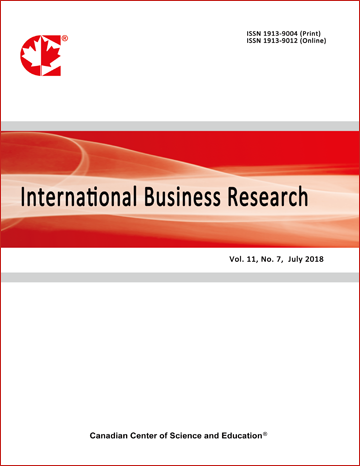Testing Sectoral Herding in the Jordanian Stock Market
- Mohammad K. Elshqirat
Abstract
The main purposes of this quantitative study were to examine the existence of herding behavior among investors in Amman stock exchange (ASE) at market and sector level in addition to testing the behavior during the market rising and falling and examining whether the behavior existence is different before and after the global financial crisis of 2008. The theoretical base of the study was the behavioral finance which assumes that investors are not completely rational and they may follow others when taking investment decisions. The main enquires of the study were about the existence of herding in the Jordanian market, whether it's affected by conditions of market rising and falling, and whether it's affected by the financial crisis. A quantitative design was employed to achieve the purposes of this study which covers the period 2000 - 2018. Data were obtained from ASE website and analyzed using ordinary least squares method. The results indicated that herding is absent in the Jordanian market if tested at market level while it exists in services and industrial sectors if tested at sectors level. The financial crisis did not affect the presence of herding at market level while it did affect the behavior in services and industrial sectors. Moreover, the results revealed that market condition of rising and falling affected herding at market level but not at sectors level. It is also concluded that the global financial crisis changed the presence of herding behavior during conditions of rising and falling in market and in each sector.
- Full Text:
 PDF
PDF
- DOI:10.5539/ibr.v12n8p88
Journal Metrics
h-index (January 2024): 102
i10-index (January 2024): 947
h5-index (January 2024): N/A
h5-median(January 2024): N/A
( The data was calculated based on Google Scholar Citations. Click Here to Learn More. )
Index
- Academic Journals Database
- ACNP
- ANVUR (Italian National Agency for the Evaluation of Universities and Research Institutes)
- CNKI Scholar
- COPAC
- CrossRef
- EBSCOhost
- EconBiz
- ECONIS
- EconPapers
- Elektronische Zeitschriftenbibliothek (EZB)
- EuroPub Database
- Excellence in Research for Australia (ERA)
- Genamics JournalSeek
- Google Scholar
- Harvard Library
- IBZ Online
- IDEAS
- Infotrieve
- Kobson
- LOCKSS
- Mendeley
- MIAR
- Norwegian Centre for Research Data (NSD)
- PKP Open Archives Harvester
- Publons
- Qualis/CAPES
- RePEc
- ResearchGate
- ROAD
- Scilit
- SHERPA/RoMEO
- SocioRePEc
- Technische Informationsbibliothek (TIB)
- The Keepers Registry
- UCR Library
- Universe Digital Library
- ZBW-German National Library of Economics
- Zeitschriften Daten Bank (ZDB)
Contact
- Kevin DuranEditorial Assistant
- ibr@ccsenet.org
